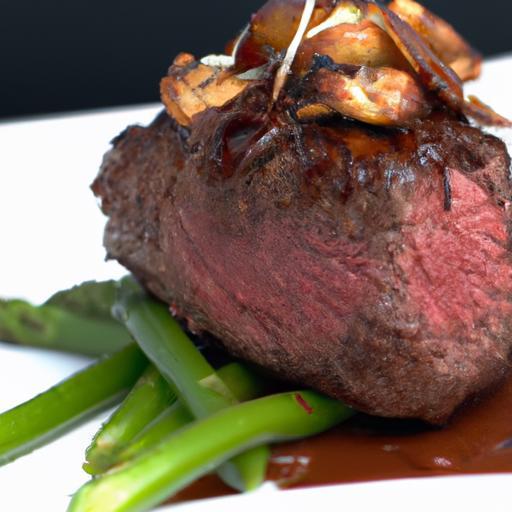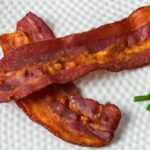There’s a captivating alchemy behind every forkful of a perfectly cooked steak-the delicate dance of heat, muscle fibers, and marbling that transforms raw cut into a tender, juicy masterpiece. Beyond the sizzle and savory aroma lies a fascinating scientific symphony at the molecular level, orchestrating texture, flavor, and moisture. In this article, we’ll slice through the layers of culinary art and food science to uncover exactly what happens inside a steak as it cooks, revealing the secrets that deliver that melt-in-your-mouth experience every meat lover craves.
The Science Behind a Tender, Juicy Steak’s Perfect Interior
The science behind a tender, juicy steak’s perfect interior unlocks the culinary magic every steak lover craves. From the way muscle fibers align to how fat delicately weaves into the meat, understanding these key elements transforms your cooking from guesswork to masterful technique. I’ve spent years exploring these nuances, discovering how precise temperature control and thoughtful resting can elevate each cut into a juicy masterpiece with mouthwatering flavor and buttery tenderness.
Prep and Cook Time
- Preparation time: 15 minutes
- Cooking time: 10-15 minutes (depending on desired doneness)
- Resting time: 10 minutes
Yield
Serves 2 hearty portions
Difficulty Level
Medium – Perfect for home cooks eager to master steak science
Ingredients
- 2 ribeye steaks, about 1½ inches thick, room temperature
- 1 tablespoon kosher salt
- 1 teaspoon freshly ground black pepper
- 1 tablespoon high-smoke point oil (e.g., avocado or grapeseed oil)
- 2 tablespoons unsalted butter
- 3 garlic cloves, lightly crushed
- 2 sprigs fresh rosemary
- Optional: finishing sea salt for serving
Instructions
- Prep the steaks: Pat dry the steaks with paper towels to ensure a perfect sear. Generously season both sides with kosher salt and freshly ground black pepper to enhance natural flavors.
- Preheat your pan: Heat a heavy-bottomed cast-iron skillet over high heat until it just begins to smoke, allowing a primo crust to develop, locking in juices via the Maillard reaction.
- Sear the steaks: Add the high-smoke point oil, swirling to coat. Place steaks carefully and sear without moving for about 3-4 minutes until a deep golden-brown crust forms. Flip and sear the other side likewise.
- Add aromatics and butter: Reduce heat to medium-low. Toss in garlic cloves, rosemary, and butter. Tilt the pan and spoon the aromatic melted butter repeatedly over the steaks, nourishing the meat with fat for a succulent interior.
- Monitor internal temperature: Use a meat thermometer to track doneness: 125°F for rare, 135°F for medium-rare, 145°F for medium. Remember, this respects the science behind a tender, juicy steak’s perfect interior.
- Rest the steaks: Transfer the steaks to a warm plate and tent loosely with foil. Rest for 10 minutes to allow carryover cooking and redistribute juices, ensuring moist, tender bites.
- Slice and serve: Against the grain, slice just before serving to maximize tenderness and reveal the juicy interior.
Tips for Success
- Choose steaks with good marbling: Intramuscular fat melts during cooking, creating flavorful, juicy bites that define the science behind a tender, juicy steak’s perfect interior.
- Aim for consistent thickness: Even thickness lets you cook steak evenly without dry edges or undercooked centers.
- Don’t skip the rest: Resting honors carryover cooking, allowing the steak’s core temperature to gently rise and juices to redistribute for luscious moisture.
- Experiment with temperature: Use a lower temperature if you prefer more uniform doneness throughout the steak; reverse searing is an excellent technique to try.
- Invest in a quality meat thermometer: Precision transforms results, preventing overcooking or undercooking.
- Use compound butter for finishing: Add herbs, garlic, or citrus zest to butter to amplify flavor just as juices lock inside.
Serving Suggestions
Present your steak on a warm plate to maintain temperature. Garnish with fresh rosemary sprigs or a sprinkle of finishing sea salt to enhance texture. Complement with classic sides like garlic mashed potatoes, grilled asparagus, or a peppery arugula salad dressed lightly with lemon vinaigrette. Pair with a bold red wine or a classic stout beer to fully celebrate the steak’s flavors.

| Nutrient | Per Serving |
|---|---|
| Calories | 620 kcal |
| Protein | 58 g |
| Carbohydrates | 1 g |
| Fat | 45 g |
For further exploration on meat science, check out Serious Eats’ comprehensive guide. This resource dives deep into muscular structure and cooking techniques that perfectly complement this recipe.
Discover more about temperature control methods in our related article to elevate your cooking skills even further.
Q&A
Q: What happens inside a steak as it cooks that makes it tender and juicy?
A: Think of the steak as a tiny, muscular labyrinth. When heat sneaks in, the muscle fibers-long, wiry proteins-start to tense up and contract. But here’s the twist: if you cook it just right, the collagen, which is the steak’s connective tissue, slowly melts into luscious gelatin. This transformation is like turning a tough maze into a plush, juicy haven, making every bite melt effortlessly on your tongue.
Q: How does temperature play a starring role in achieving that perfect steak interior?
A: Temperature is the maestro of steak tenderness! Too hot, too fast, and the proteins tighten up harshly, squeezing out the precious juices. Too low, and you risk a rubbery ride. The magic zone-medium-rare, roughly 130-135°F (54-57°C)-is where the steak’s muscle fibers have relaxed just enough, and the collagen has begun to soften, crafting that perfect juicy and tender middle.
Q: Why is resting the steak after cooking so crucial?
A: Resting is like letting your steak take a well-deserved breather. While it cools slightly, the juices that were pushed to the center during cooking re-distribute throughout the meat. It’s the difference between a juicy serenade and a dry solo. Cut too soon, and those juices run down your plate instead of your palate!
Q: Does marbling influence the steak’s interior texture and juiciness?
A: Absolutely! Marbling is the secret mariner’s map to steak bliss-those flecks of intramuscular fat slowly melt as the steak cooks, flooding it with flavor and moisture. This fat acts like a natural tenderizer, keeping the meat moist and adding layers of buttery richness that make each bite a symphony of juiciness.
Q: How do different cuts of steak affect the science behind juiciness and tenderness?
A: Different cuts are like characters with unique stories. Tender cuts like ribeye and tenderloin have less connective tissue and more marbling, making them naturally juicy and soft. Tougher cuts, like chuck or brisket, are denser with collagen, requiring slower, gentler cooking to transform into tender delights. Knowing your cut is knowing the cooking story you’re about to tell!
Q: Can seasoning and preparation impact the steak’s internal texture?
A: Indeed! Salt is a trusty ally-it draws out moisture initially but then helps the steak reabsorb it, seasoning the meat deep inside and enhancing juiciness. Techniques like dry brining or letting the steak sit at room temperature before cooking also prime the fibers for even cooking, elevating tenderness to an art form.
Q: What role does moisture play inside the steak during cooking?
A: Moisture is the lifeblood of a steak’s interior. As the steak heats up, water inside the muscle cells can either stay locked in to create juiciness or be expelled, leading to dryness. The goal is to balance heat and time so that water is retained-this involves controlling cooking temperature and resting properly-resulting in that sought-after succulent bite.
Discovering the science behind a tender, juicy steak transforms every cook into a meat maestro, orchestrating heat, time, and seasoning into a carnivorous masterpiece!
To Wrap It Up
As the final sizzle fades and the aroma lingers in the air, understanding the science behind a tender, juicy steak transforms a simple meal into a culinary triumph. From the Maillard reaction that crafts that irresistible crust, to the precise dance of heat that unlocks the meat’s natural juices, every element plays a vital role in creating perfection on your plate. So next time you savor that melt-in-your-mouth bite, remember-it’s not just cooking; it’s chemistry, artistry, and a little bit of magic all working together. Armed with this knowledge, you’re now ready to elevate your steak experience beyond flavor, into the realm of science.


